Single cells offering limitless potential
Revolutionary techniques to extract and sequence the genetic material of a single cell are allowing scientists to begin to answer fundamental questions.
And the Earlham Institute’s annual Single Cell Symposium brings together leaders in this field and those who are pushing the limits of what's possible.
Dr Seung Yon (Sue) Rhee, Senior Staff Scientist at the Carnegie Institution for Science in Palo Alto, and Dr Detlev Arendt, Group Leader and Senior Scientist at the European Molecular Biology Laboratory (EMBL) in Heidelberg, were keynote speakers for this year’s symposium.
Joined by the Earlham Institute’s Dr Iain Macaulay, these leaders in the field have spoken to Amy Lyall about why they are drawn to single cell research, the opportunities and challenges this approach offers, and where they see the field going in the next few years.
Dr Macaulay said: “It was really great to hold the symposium again in person this year – we had many excellent talks, and in particular it was great to see single-cell approaches being applied in such a wide array of living systems. The emerging Plant and Biodiversity Cell Atlas programmes really demonstrate how universally applicable these techniques are.”
“There is still so much activity in developing and applying new multi-omic and now spatial assays – the technical leaps we are seeing are really amazing, from detailed measurements of multiple epigenetic markers in single cells to the spatially resolved analysis of gene expression in whole tissues.”
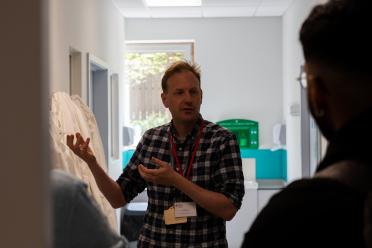
Dr Rhee, who is a plant scientist, says she is relatively new to the single cell field.
“When the concept of the microbiome first came out, it became clear we are not single organisms,” she explains. “We are living with - and depending on - other organisms. It led to a revolution in the way we thought about multicellular organisms.
“I think single cell science will prove to be as transformative as that discovery. We thought cells in the same tissue were identical, but they aren’t. There is heterogeneity.”
Dr Rhee believes single cell genome analysis gives researchers a chance to think about a cell’s function in a different way.
“Questions we’ve been asking for a very long time could be answered by looking at the transcriptomes, proteomes and metabolomes of individual cells.”
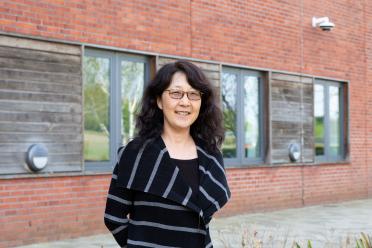
The plant community is already benefiting from single cell analysis of plant cells. “Single cell work from the Coaker and Cole labs has allowed us to find 250 genes potentially involved in plant-pathogen interactions,” she says, “which were not previously identified by “bulk” analysis.
“Reaction to pathogens has been thought of as occurring at the organism level - the whole plant was susceptible or resistant. It was hugely exciting to look at a plant and discover that, in fact, there were populations of susceptible and resistant individual cells within a single leaf.
“We never expected to find variation like this at the cellular level.”
Dr Rhee has spearheaded the building of the Plant Cell Atlas community. This community aims to identify various plant cell types, states, and transitions. It also aims to generate high-resolution location information for nucleic acids, proteins, and metabolites within plant cells.
It is intended to be a comprehensive map of all the molecular determinants of plant cells, allowing researchers to understand and engineer them.

Single cell work has allowed us to find 250 genes potentially involved in plant-pathogen interactions, which were not previously identified by “bulk” analysis.

Dr Seung Yon Rhee, Carnegie Institution for Science
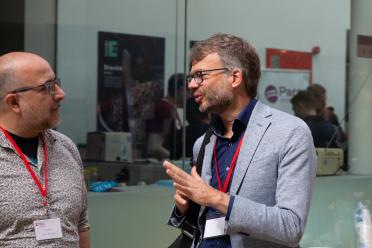
During the Symposium, Dr Arendt described the impact of single cell sequencing on his own work. He discussed tracking cellular identities through micro- and macro-evolution in the living fossil Platynereis dumerilii, a marine worm used as a model organism in development, evolution, neurobiology and ecology.
Dr Arendt led the building of PlatyBrowser, an interactive atlas which allows scientists to travel virtually to any cell found in a young P. dumerilii worm, inspect the cell’s ultrastructure in its anatomical context, and examine the genes expressed in that cell. It is available as an open-source plug-in into FIJI.
This new ability to cluster cells showing similar gene expression gave his group the chance to see the clusters follow morphological boundaries in the animal’s body - a level of insight which had not been possible before.
Dr Arendt said: “This way we have been able to understand the molecular and cellular underpinning of the worm’s mushroom bodies - sensory associative structures that have been compared to the cortex in our human brain.
“One striking result is that the mushroom bodies harbor chemosensory cells and thus might function as a chemosensory organ. This is important because scientists believe that sensory associative structures may have evolved from chemosensory organs.”
He said that, using single cell sequencing, the Arendt group were able to see shifts in the ratio of cell types between animals found in Heidelberg and animals found in Villefranche.
“Of the clusters we identified, one was absent in Villefrance animals and another was more frequent. This is a very interesting variation we would not have been able to identify without single-cell sequencing.”
All three researchers agreed there was a huge variety of applications for single cell research, and it was nearly impossible to predict where the field would take researchers in the future.
“There are lots of different areas of research where this could make a difference,” says Dr Rhee.
“This is a very exciting and fast-moving field with significant potential,” summarises Dr Arendt.
And Dr Macaulay added: “Looking back to the first symposium in 2016, and seeing how far things have come since then, it is really exciting to guess at what we might see presented in the future.”

Of the clusters we identified, one was absent in Villefrance animals and another was more frequent. This is a very interesting variation we would not have been able to identify without single-cell sequencing.

Dr Detlev Arendt, EMBL Heidelberg
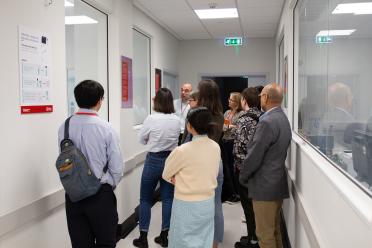
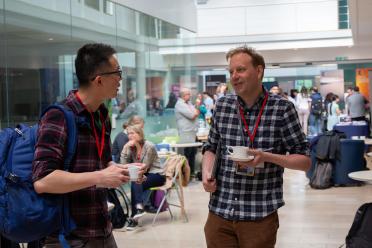
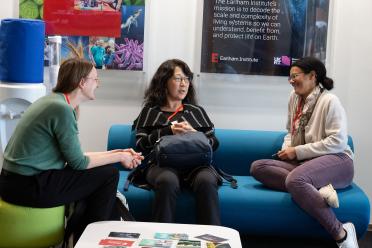

There is still so much activity in developing and applying new multi-omic and now spatial assays – the technical leaps we are seeing are really amazing, from detailed measurements of multiple epigenetic markers in single cells to the spatially resolved analysis of gene expression in whole tissues.

Dr Iain Macaulay, Earlham Institute
The Earlham Institute’s Cellular Genomics strategic research programme has just launched. Over the last few years, the Institute has developed software and laboratory protocols to examine molecular cellular identity in model systems; developed unprecedented levels of cell resolution and analysis; and characterised genes and cell-types associated with resistance to disease and climate change.
Now, we will be building on our pioneering new approaches to single-cell genomics, and continuing to investigate the impact of diversity and variation in genes and their expression at the single-cell level.
The Single-Cell Symposium was held at the Earlham Institute on 3 May. The annual event brings together people working on similar challenges in diverse systems – microbial, plant, human and animal – and gives them a chance to focus on the possible applications of single-cell genomics.
This year’s Single-Cell Symposium was supported by the UEA School of Biological Sciences and The Company of Biologists. Event sponsors included Bio-Techne, BioSkryb Genomics, Cellenion, iotaSciences, LevitasBio, Jumpcode Genomics, PacBio, Parse Biosciences, Sphere Fluidics, Swift Analytical, and Vizgen.
Sign up to our newsletter to be the first to hear about the latest single-cell applications, training and events from the Earlham Institute.